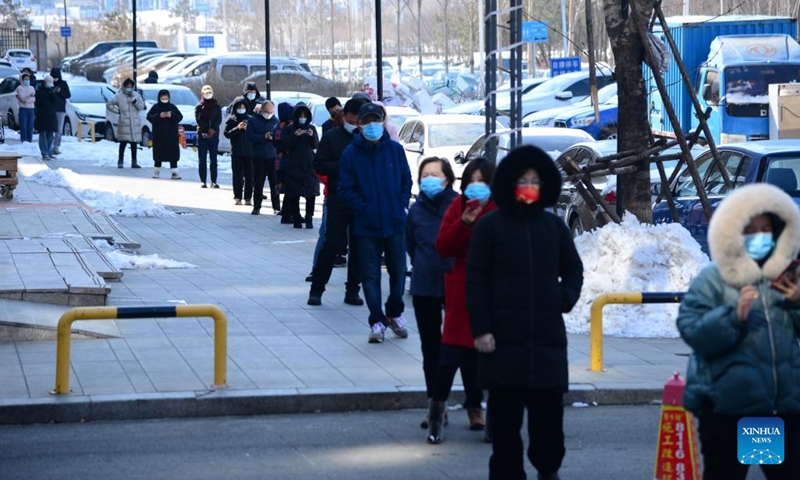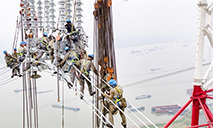China issues more targeted testing guideline under dynamic zero policy, no longer requires mass testing

Citizens line up for nucleic acid test at a testing site in Changchun, northeast China's Jilin Province, March 20, 2022. Photo:Xinhua
China on Tuesday revised its guideline on nucleic acid testing, which no longer requires citywide testing but regional testing, in order to make its epidemic prevention and control measures more targeted under the dynamic zero-COVID policy amid the worst outbreak in two years, which has spread to 28 provinces and regions.
Jiao Yahui, head of the Bureau of the Medical Administration of the National Health Commission, said at Tuesday's media briefing that the new guideline highlighted regional nucleic acid testing instead of previous mass testing to more scientifically define the areas for testing.
The new guideline also sets a strict time limit for the designated area of a city to complete testing, which is to be finished within 24 hours, Jiao said. The adjustment was a response to the stealth Omicron variant, which can spread rapidly.
According to the new guideline, all required districts and cities including megacities with more than 10 million residents should complete nucleic acid testing for residents in a designated area within 24 hours.
The previous guideline issued in September 2021 said that cities with fewer than 5 million residents should complete nucleic acid testing for every individual within two days, while cities with more than 5 million were expected to complete the task within three days.
As for whether the new rules indicated that there will be no more mass testing, Jiao said at Tuesday's media briefing that an important precondition of whether the testing involves the entire population in a city or just in a region is how well we manage the infection risks.
She said it's not necessary to conduct citywide testing each time. If the risks are controllable, we could narrow the region for testing based on sources of infections.
The ultimate goal is to ensure that all positive cases are found only in those who are under quarantine instead of in communities, she said.
Chinese health experts said the detection of a large number of silent carriers caused by the stealth Omicron variant has increased the difficulty in sticking to the dynamic zero-COVID policy, so China needs to adjust its prevention measures to be more targeted and scientific.
Liang Wannian, head of China's COVID-19 response expert panel, said at the same media briefing that the key for targeted measures lies in rapidity and efficiency, and we need to further adjust our epidemiological investigation, trace close contacts, monitor virus mutations and ensure that nucleic acid testing is more targeted based on science and technology.
He noted that the new guide was a fine example of how we scientifically made our testing more targeted.
Liang stressed that amid the grim and complex epidemic situation, China should unswervingly stick to the dynamic zero-COVID policy. He said China has the foundation, conditions and capability to implement the policy, which has been proved to be effective and was in line with China's reality.
A Beijing-based immunologist, who requested anonymity, told the Global Times the adjustment of the guideline and the recently updated COVID-19 treatment playbook both underline a science-based and precision-based anti-epidemic strategy.
He said that the change did not indicate that China was planning to open its international borders, but was a direct response to the fact that the Omicron strain is dominating domestic outbreaks in the country.
China reported more than 41,000 locally transmitted cases from March 1 to Monday, involving 28 provinces and cities. Among them, Northeast China's Jilin Province has reported daily new cases of more than 1,000 for eight days since March 14.
As for the time requirement for regional testing, the immunologist said that it would be easy for megacities like Beijing and Shanghai to finish testing within 24 hours, but for second-tier megacities like Xi'an in Northwest China's Shaanxi Province, it requires stronger governance capacity.
Photos
Related Stories
Copyright © 2022 People's Daily Online. All Rights Reserved.










